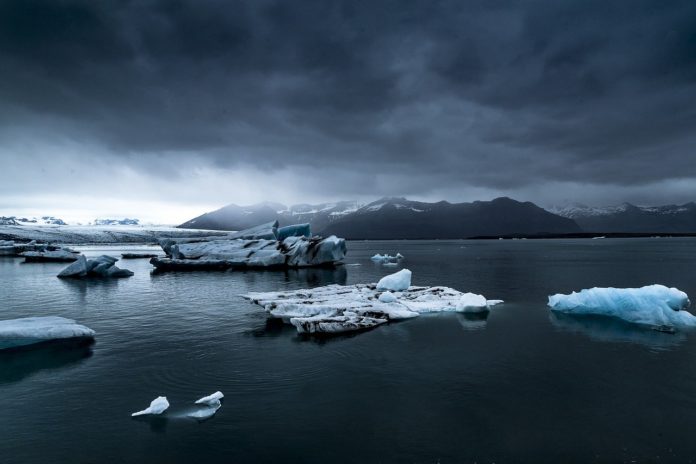Plastics are the most common pollutant littering beaches and oceans across the world. Even in less-inhabited regions of the world like the Arctic, plastic litter is ubiquitous: it can travel incredible distances along ocean currents, eventually making its way to some of the most remote reaches of the globe.
Single-use plastics represent a real concern for the environment, and it’s for this reason that many countries, including Canada, are taking steps to eliminate these pollutants as soon as possible.
Similarly worrisome, but much less well-understood, are so-called microplastics: small pieces of plastic less than five millimetres across that are commonly found as exfoliants in health and beauty products, or that originate from the breakdown of larger plastic waste.
Of particular concern are the effects they may have on Arctic sea ice, which has recently been shown to contain far higher concentrations of microplastics than Arctic seawater. And while little research has previously been done into the effects of microplastics on the Arctic environment, a new study from the University of Manitoba suggests that these tiny plastics may have a larger impact than many might expect.
The study was led by Nicholas-Xavier Geilfus, a research associate at the University of Manitoba’s Centre for Earth Observation Science, and was published in Marine Pollution Bulletin.
Shining a light on the impacts of microplastics
To study the impact microplastics have on Arctic ice, Geilfus and his team set up their own Arctic ocean a little closer to home. They made use of the University of Manitoba’s Sea-ice Environmental Research Facility: an outdoor seawater pool that can be used to simulate conditions in the Arctic ocean and grow ice for use in experiments under controlled conditions.
The team simulated sheets of sea ice containing different concentrations of microplastics, including a control set with no microplastics added, as well as low, medium, and high concentrations.
Their hypothesis was that microplastics could affect the amount of sunlight absorbed by Arctic sea ice, therefore leading to increased levels of melting.
After allowing the ice to grow for several weeks, the researchers found that although the presence of microplastics didn’t affect the ice’s growth rate, it did increase its albedo, or its ability to reflect solar energy. This was due to the fact that the low-density microplastics tended to be concentrated at the surface of the sea ice, and therefore had an effect on how much sunlight was absorbed or reflected by these uppermost layers.
The team then compared their results to real samples taken from the Gulf of Bothnia in the Baltic Sea. Their samples came from nine different sea-ice research stations across the gulf.
While the real-world samples the team collected did contain microplastics, they occurred in far lower concentrations than the medium- and high-concentration simulated ice samples they’d studied previously. These lower concentrations were similar to what has been previously reported in the Arctic ocean, and likely aren’t enough to have a large impact on the sea ice albedo. However, the authors note that there may be regions of the world with higher levels of microplastics that would indeed experience increased albedos.
The need to reduce microplastic pollution
What Geilfus’s study shows is that while microplastics may not be enough to significantly impact Arctic sea ice today, they represent a real concern for the future.
“Microplastic concentrations in the Arctic are expected to increase rapidly due to increasing freshwater input and the intensification of shipping traffic and resource development activities,” Geilfus said in an article for The Conversation. “There is an urgent need to assess the distribution, pathways and fate of microplastics in the Arctic.”
Geilfus’s investigation into the effects of microplastics is the first step, but what can we do going forward to make sure that microplastic concentrations don’t reach the concerning levels represented in his study?
The Lake Ontario Waterkeepers suggest reporting pollution where you see it, and doing what you can to limit your own use of plastic products. Together, we can help protect Canadian waters, from the Northernmost reaches of the Arctic to the Great Lakes and more.








































